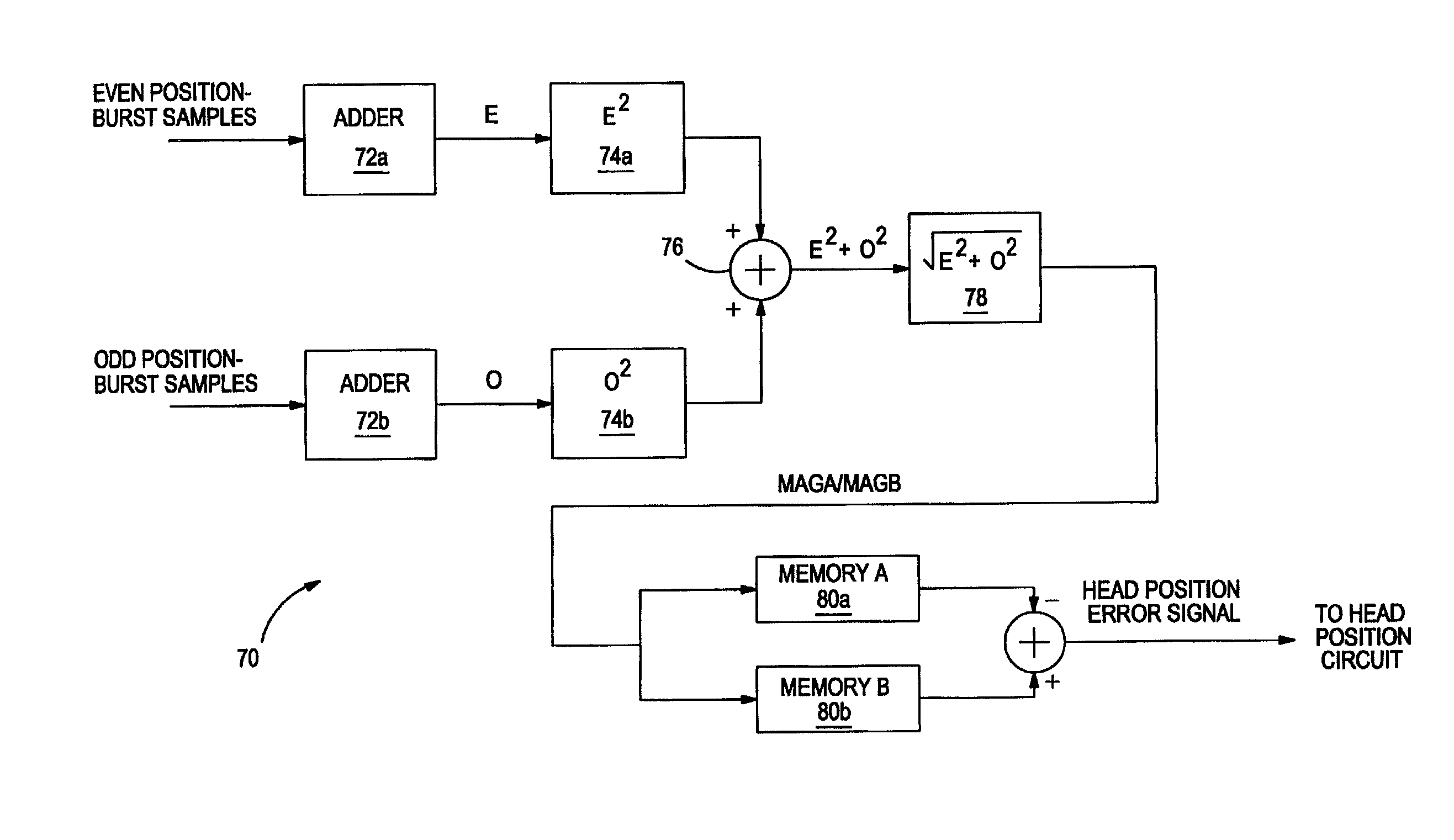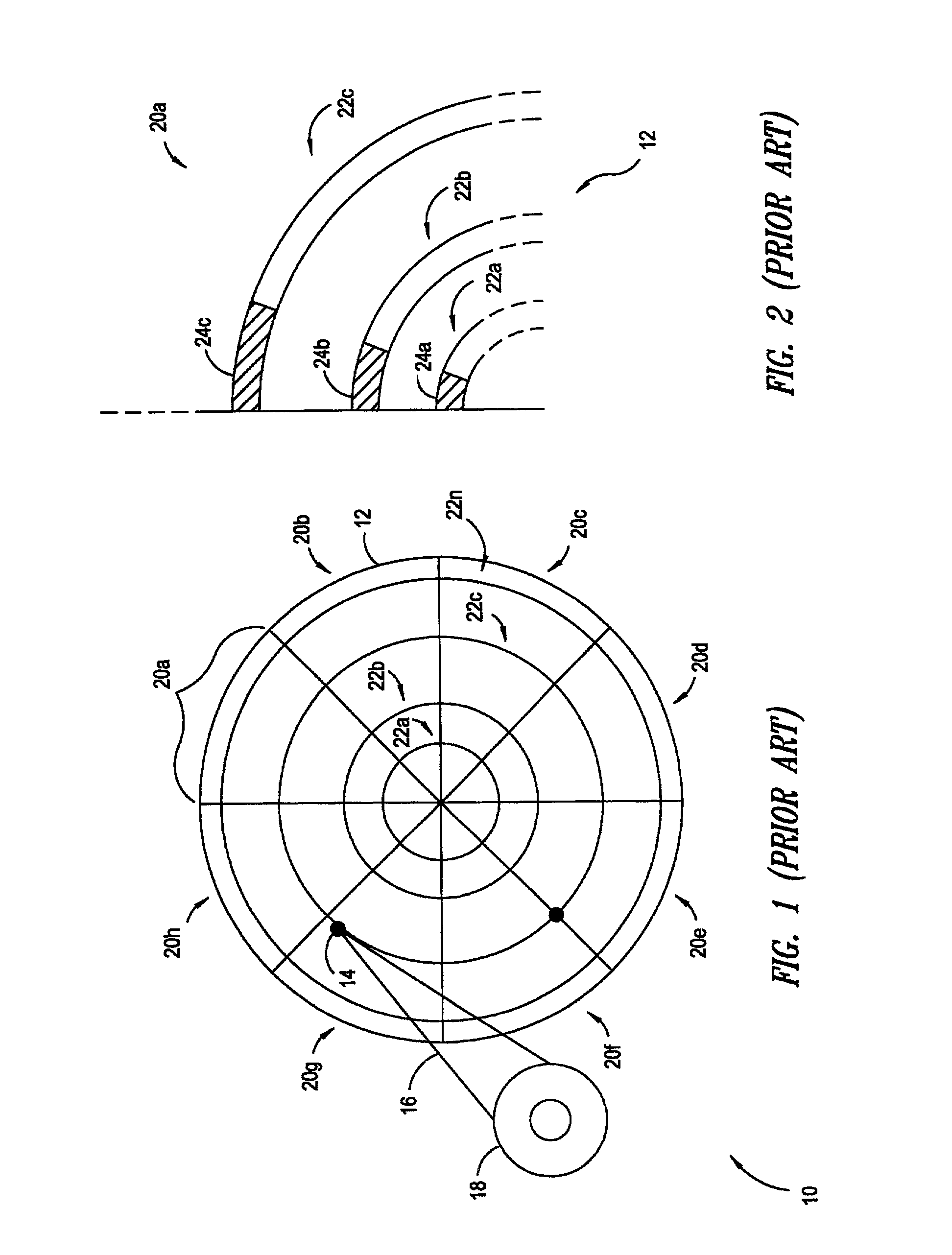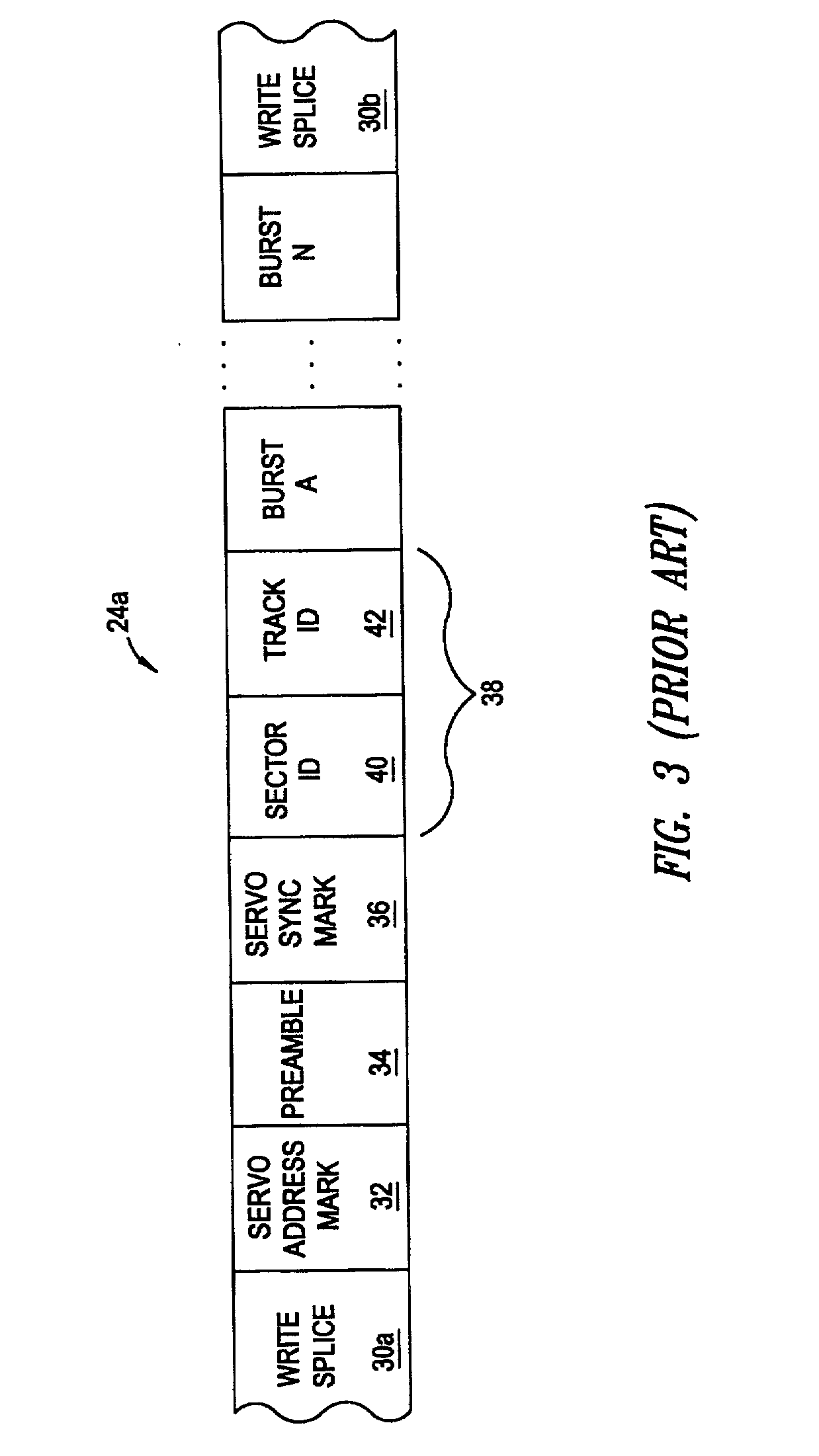Circuit and method for demodulating a servo position burst
a technology of position burst and circuit, which is applied in the field of electronic circuits, can solve the problems of incorrect position of the head-position circuit, inaccurate calculation of the burst amplitude, and inability to accurately calculate etc., and achieves the effect of shortening the position burst, calculating the burst magnitude and the head-position error signal more accurately
- Summary
- Abstract
- Description
- Claims
- Application Information
AI Technical Summary
Benefits of technology
Problems solved by technology
Method used
Image
Examples
Embodiment Construction
[0032]FIG. 6 is a block diagram of a position-burst demodulator 70 according to an embodiment of the invention. As discussed below in conjunction with FIG. 7, the circuit uses a variation of a known trigonometric identity to calculate the magnitude of a position burst (FIGS. 4 and 5 ) independently of the synchronization, or lack thereof, between the sample clock (FIG. 5) and the postion burst. In the embodiment discussed in conjunction with FIG. 6, the demodulator 70 is part of a servo circuit (FIG. 8) and provides a head-position-error signal to a head-position circuit (FIG. 9). Alternatively, the demodulator 70 may be part of the head-position circuit.
[0033]FIG. 7 is a phase diagram of a positive half period of the burst sinusoid of FIG. 5, and illustrates how the position-burst demodulator 70 of FIG. 6 calculates a synchronization-independent value for the magnitude Y of the burst sinusoid. Specifically, samples 90 and 92 are 90° apart. Therefore, one can calculate the amplitude...
PUM
| Property | Measurement | Unit |
|---|---|---|
| data-storage densities | aaaaa | aaaaa |
| storage density | aaaaa | aaaaa |
| frequency | aaaaa | aaaaa |
Abstract
Description
Claims
Application Information
 Login to View More
Login to View More - R&D
- Intellectual Property
- Life Sciences
- Materials
- Tech Scout
- Unparalleled Data Quality
- Higher Quality Content
- 60% Fewer Hallucinations
Browse by: Latest US Patents, China's latest patents, Technical Efficacy Thesaurus, Application Domain, Technology Topic, Popular Technical Reports.
© 2025 PatSnap. All rights reserved.Legal|Privacy policy|Modern Slavery Act Transparency Statement|Sitemap|About US| Contact US: help@patsnap.com



